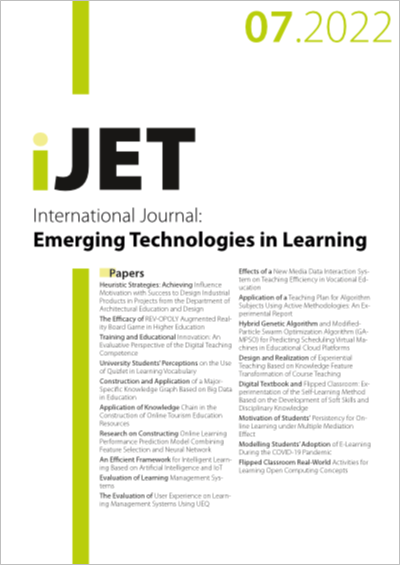Evaluation of Learning Management Systems
A Comparative Study Between Blackboard and Brightspace
DOI:
https://doi.org/10.3991/ijet.v17i07.28881Keywords:
eLearning, Distance Education, Learning Management Systems, Higher EducationAbstract
This study examined, by analysis and comparison, two Learning Management Systems (LMS): Blackboard and Brightspace. The field research sample consisted of 513 students at Umm Al-Qura University. The study attempted to answer central questions dealing with the evaluation level of Umm Al-Qura University students for the characteristics of these two LMS. The study concludes that most students agree on the benefits of Blackboard and Brightspace, and according to them, the most common advantages of these LMS are: Help to access shared data and files, record and monitor the learner's performance, help to control and customize the educational process, facilitate the exchange of experiences and scientific concepts with others, the stable interface in controlling and moving among other components, facilitate discussion with the teacher and with students, and interface easy to understand and learn and easy to use. The study revealed that there is a statistically significant difference between the mean scores of students who use the Blackboard system and students who use the Brightspace system in the overall score to evaluate the e-learning system characteristics in favor of students who use the Brightspace system. This means that students who use the Brightspace system are more sensitive to the advantages of an e-learning system compared to students who use the Blackboard system. The findings can be used to assist educators in producing the best process of implementing open and distance learning. The appropriate techniques must be chosen to ensure that no student drops behind and that the teaching and learning process works with sustainability.
Downloads
Published
How to Cite
Issue
Section
License
Copyright (c) 2022 hanaa yamani, Ahmad Alharthi, LASSAAD Kacem SMIRANI

This work is licensed under a Creative Commons Attribution 4.0 International License.



